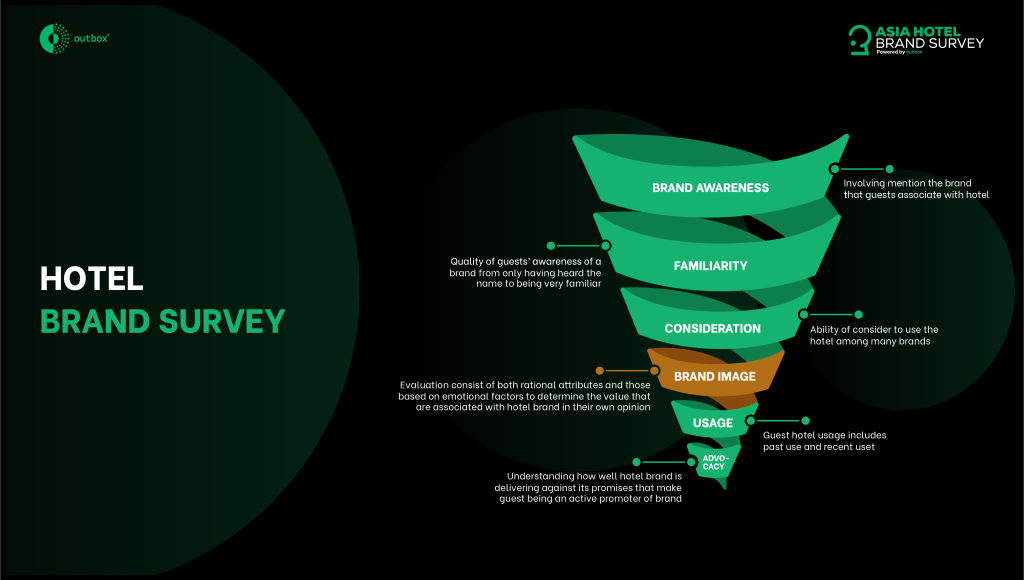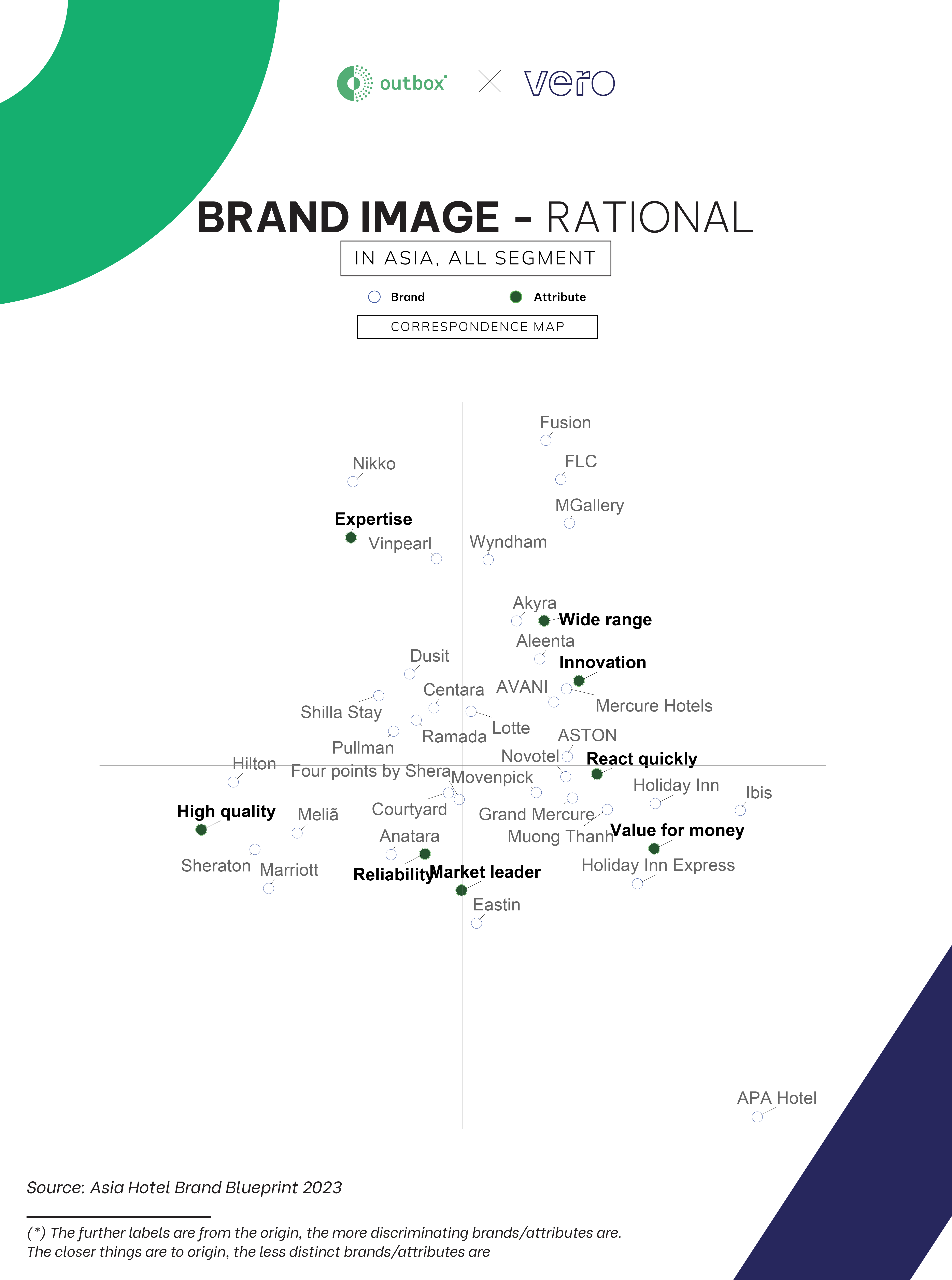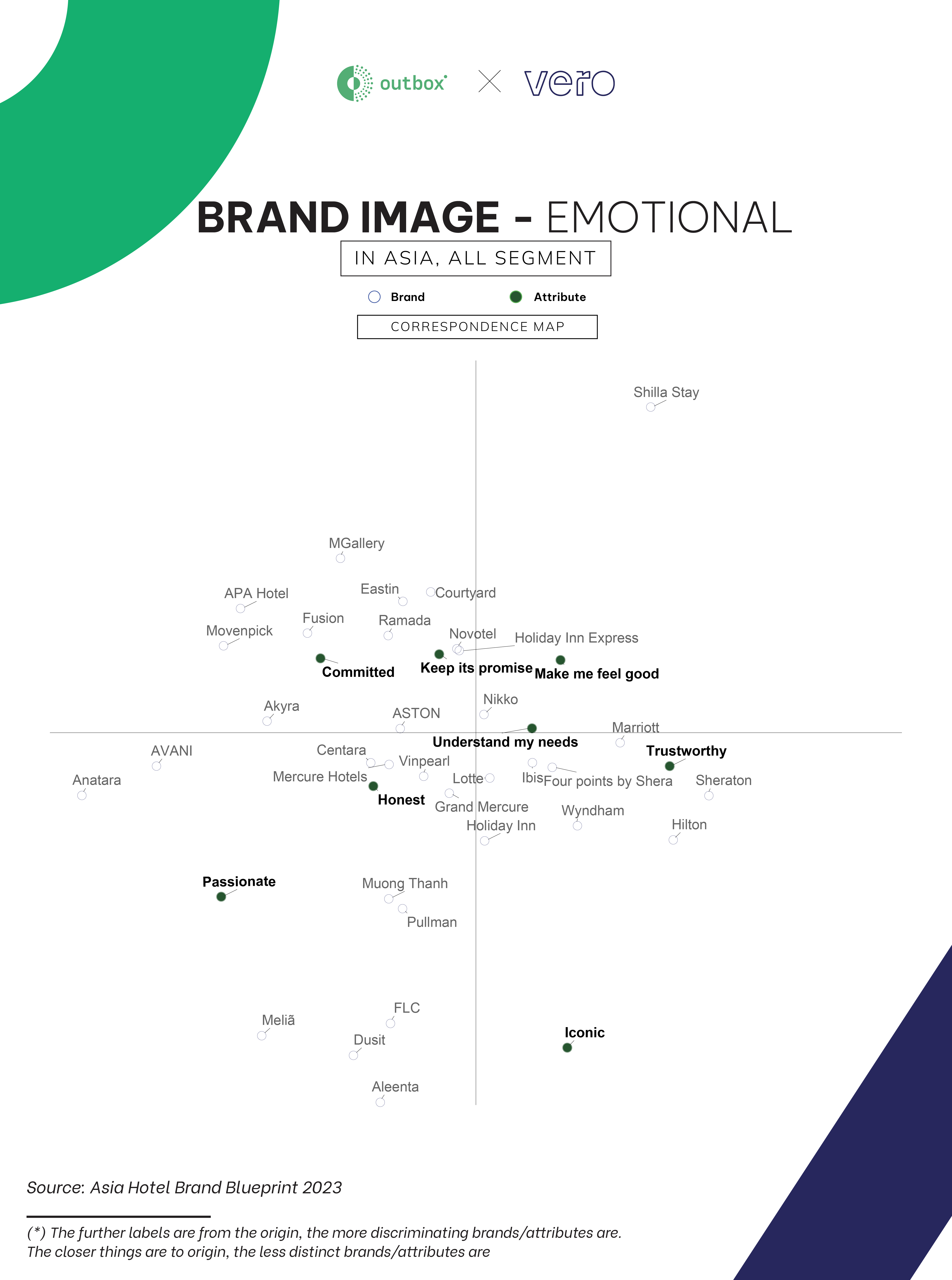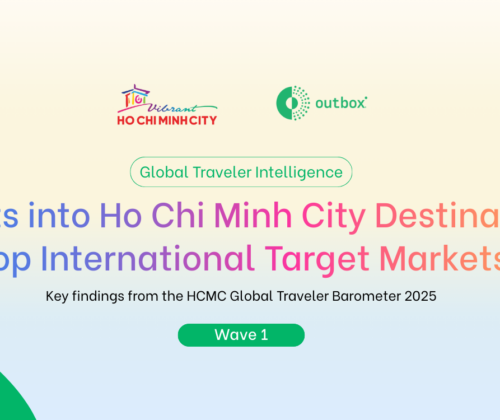The brand funnel framework serves as a roadmap for brands to connect with consumers at different touchpoints. It typically includes stages such as awareness, familiarity, consideration, usage and advocacy. As consumers move through these stages, their relationship with a brand deepens.
Hospitality industry is not an exception when the brand funnel model is used to evaluate travelers’ perceptions towards specific hotel brands. As a pioneer in travel insights intelligence, Outbox understands that to unravel the intricacies of travelers’ behaviors, hotel sectors must go beyond conventional approaches with multifaceted analysis. Guided by this, we have a groundbreaking addition to the traditional brand funnel – Hotel Brand Image.

Hotel Brand Image
Hotel Brand Image refers to the image linked to a hotel brand, evoked when travelers hear or think about it. It enables hotels to identify and analyze the emotional and rational connections that travelers have with hotel brands, gaining deep insights into what influences their decisions.
Emotional attributes are about how the brand makes people feel, while rational attributes are linked to the product or service itself, usually are common images. By understanding these attributes, hotels can have actionable strategies for fostering lasting connections, leading to sustained retention and loyalty.
In our collaboration with Vero for the latest report – Asia Hotel Brand Blueprint 2023, we use correspondence mapping to analyze and illustrate the relationship between hotel brands and these attributes. The closer an attribute is to a brand, the stronger travelers connect that attribute with the brand in their minds. The hotel brands that share similar attributes will be close to each other.
For example, in this rational attribute mapping, Holiday Inn Express and Holiday Inn are linked to the “Value for Money” attribute. This suggests that travelers see these two hotels as giving good value for their money. Similarly to emotional factors, Marriott and Sheraton are both positioned near the “Trustworthy” attribute and close to each other on the map. This means that Asian travelers view these hotels as reliable and trustworthy.


As we navigate the ever-evolving landscape of the hospitality industry, it’s obvious that Hotel Brand Image isn’t just an add-on but a game-changer. By embracing this multifaceted analysis, hotels can craft compelling narratives, fostering connections that transcend mere transactions. In the pursuit of sustained retention and loyalty, Hotel Brand Image becomes a guide, showing hotels the way to success in a competitive market by understanding what travelers really think.
To delve deeper into these insights, download and explore the full scope of the hotel brand health index in Asia Hotel Brand Survey.



